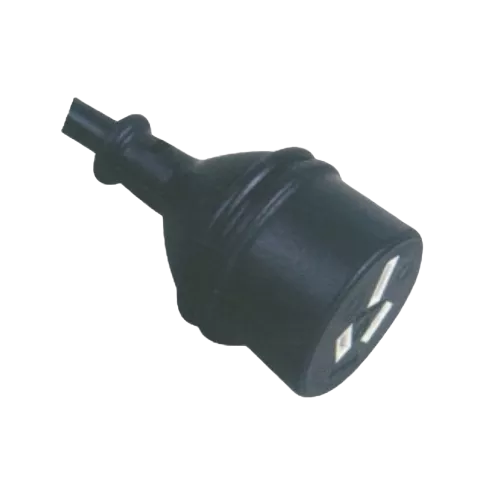Material Quality: The durability of a three-core Australian power cord heavily relies on the quality of materials used throughout its construction. High-quality cords typically feature outer casings made from robust materials like PVC (Polyvinyl Chloride) or durable rubber compounds. These materials are chosen for their ability to withstand physical impacts, environmental factors such as temperature variations and exposure to sunlight, and resistance to chemicals or oils that might be encountered in industrial or outdoor settings. Quality materials ensure the cord maintains its structural integrity over time, reducing the risk of cracks, cuts, or abrasions that could compromise electrical safety.
Construction: Internally, the cord's construction is designed to optimize durability and performance. Copper conductors are commonly used for their superior electrical conductivity and mechanical strength. These conductors are insulated with materials that provide protection against electrical faults and mechanical stress. Secure connections between the plug, cable, and socket are crucial to preventing issues such as loose connections or short circuits, which can arise from frequent movement or vibrations in high-traffic areas. Reinforced strain relief at connection points helps to minimize wear and tear, ensuring reliable electrical contact and prolonging the cord's lifespan.
Flexibility: Flexibility is a key attribute for a power cord intended for use in high-traffic environments. Flexible cords are less likely to kink or tangle, making them easier to handle during installation and less susceptible to damage from bending or twisting. This flexibility not only facilitates installation in tight spaces or around obstacles but also reduces strain on the cord itself, thereby extending its longevity. In applications where the cord needs to accommodate frequent movement or repositioning, such as in workshops or event spaces, flexibility is essential for maintaining continuous electrical connectivity without compromising safety.
Abrasion Resistance: Power cords in high-traffic areas are prone to abrasion from contact with floors, walls, or furniture. Cords designed with abrasion-resistant properties feature durable outer layers that shield against friction and physical wear. These layers may include specialized coatings or rugged designs that mitigate damage from rough surfaces or sharp edges encountered in industrial or commercial settings. By protecting the cord from external impacts and abrasion, these features contribute significantly to maintaining its appearance, electrical integrity, and overall reliability over extended periods of use.
Usage Environment: The environment in which a power cord operates significantly impacts its durability and performance. In high-traffic areas, proper installation practices are crucial for maximizing longevity and safety. This includes securing the cord away from foot traffic or potential hazards, using cable protectors or conduits to prevent accidental damage, and ensuring adequate clearance from sharp objects or heavy equipment. By considering these factors, users can optimize the durability of the power cord and minimize the risk of downtime or electrical hazards in demanding applications.
AZ3-15 Three-core Australian power cord



 English
English عربى
عربى











